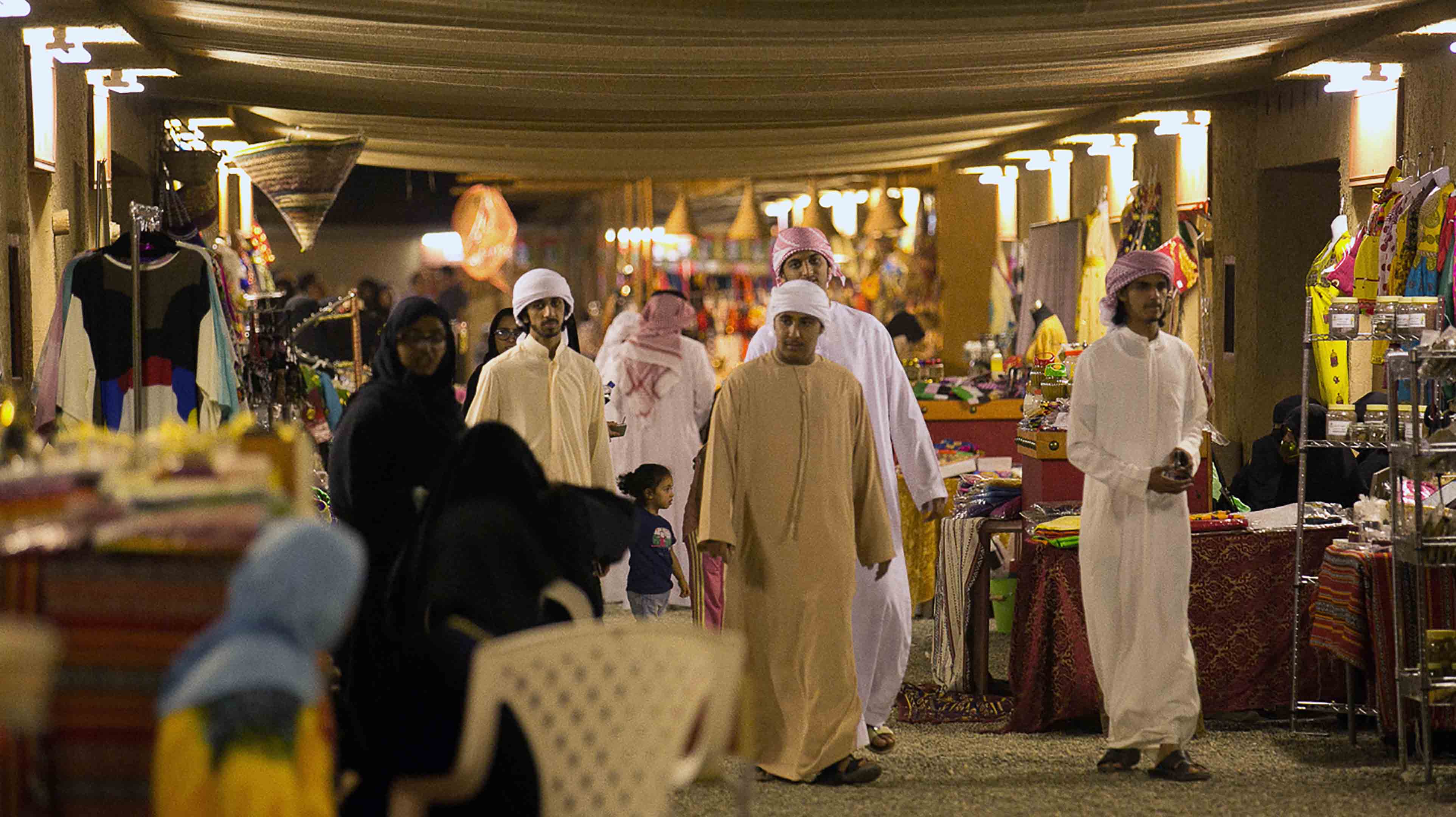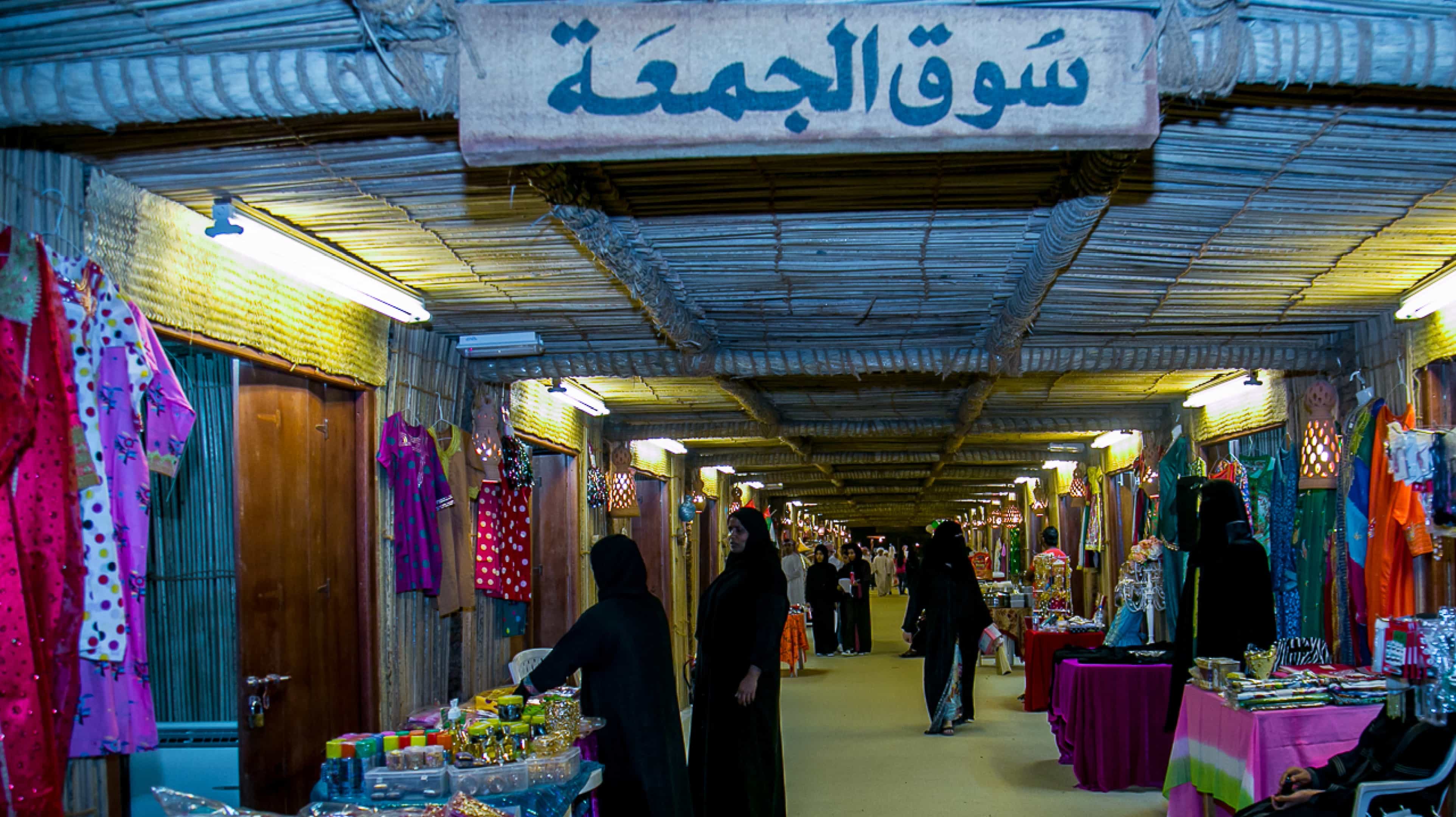See All
Handicraft Tour in Al Ain
Head to Al Ain for a day filled with handicrafts, beautiful scenery and traditional cuisine.
Explore Souqs and destinations where traditional Emirati crafts are practiced. These ancient techniques have been passed down from generation to generation. From basket making to traditional wear, artisans produce the finest items that make for perfect souvenirs and gifts.
Highlights
Highlights
Day 1 highlights
Firstly, begin with a visit to Souq Al Qattara. Every Thursday, Friday and Saturday from October to May, the traditional handicrafts market takes place. Here you'll see traditional handicrafts being created by male artisans in front of your eyes. You can then purchase these authentic items for mementos or gifts for back home.
The nearby Al Fanar restaurant is a must if you want to experience traditional Emirati cuisine. You can then visit the nearby Al Ain Oasis where you can connect with nature and see the live demonstration of female artisans who sew various types of traditional wear.
Al Fanar Restaurant & Cafe
Stop 2
Recommended Time: 1 hour
If authentic Emirate culture and cuisine is what you’re after, then head to Al Fanar Restaurant & Cafe in Abu Dhabi, adjacent to Ferrari World at Yas Mall. This Emirati-themed restaurant and café serves up distinctive, traditional flavours in a nostalgic space. With branches across the emirate, each restaurant boasts unique flavours, including fresh salads, seafood and meats.
This is a great place to step back into the UAE’s past. Kick off your day with a traditional Arabic breakfast or enjoy a mix grill platter for lunch. For dinner, indulge in appetisers to begin, such as grilled jumbo shrimp, grilled squid, deep fried fish roe or ali wallam (thin potato slices oven baked with onion, garlic and Arabic spices).
Main dishes include classic laham nashef (mutton cooked in rich gravy and special spices), machboos samak (fish cooked with yellow rice and simmered in fish stock and Arabic spices) or biryani deyay (chicken served with a mix of rice, onions, lentils, beans and raisins).
Al Ain Oasis
Stop 3
Recommended Time: 1 hour
With its still-operational traditional falaj (ancient irrigation system) and meandering pathways shaded beneath a thick canopy of over 147,000 date palms and other fruit trees, Al Ain Oasis is the perfect place to bring family or friends to see what agriculture in this region has looked like for millennia.
Covering 1,200 hectares, this lush oasis provides a unique insight into the region's inhabitants who began taming the desert 4,000 years ago. Located in the centre of Al Ain, Abu Dhabi's garden city and heritage heartland situated about a one-and-a-half-hour's drive away from the capital, this is the largest of Al Ain's oases. Farmers tend to thousands of date palms of 100 different varieties, as well as fodder crops and fruit trees, such as mango, orange, banana, fig and jujube (known locally as sidr). Individual plots and working farms are separated from each other by historic boundary walls.
The water supplying the lush oasis comes from both wells and the ancient falaj system that taps distant underground or mountain aquifers and then delivers the water, sometimes over many kilometres, to farms via a system of ground-level and below-ground aqueducts. Al Ain Oasis has plenty of working examples of the falaj that have been used for centuries. There are two main falaj systems serving the oasis: Al Aini and Dawood. They provide water to two separate parts of the oasis and both come from the southeast, the direction in which the Hajar Mountains and the nearby Jebel Hafit mountain lie.Once inside the oasis, water is distributed via an intricate network of channels. Distribution is strictly enforced and implemented by blocking channels in a manner that directs water to the required areas only.
Al Ain Oasis has been a UNESCO World Heritage Site since 2011, but only recently, with the construction of an educational Eco-Centre and the addition of an extensive system of shaded pathways, was it opened to the public.Through a series of immersive interactive exhibits, the Eco-Centre highlights the measures being taken to preserve the delicate oasis ecosystem and celebrates the invaluable contribution that Al Ain's oasis farmers have made to agriculture through their traditional farming methods.
The UN's Food and Agriculture Organization recognises all of Al Ain's oases for their importance as repositories of genetic resources, biodiversity and cultural heritage.
Souq Al Qattara is situated in a UNESCO World Heritage Site in Al Ain, Abu Dhabi’s green garden city and heritage heartland about 90 minutes from the capital city. Dating back to the mid-20th century and founded by the late Sheikh Shakhbut bin Sultan Al Nahyan on the palm-lined road linking Al Ain’s Al Qattara and Al Jimi oases, the historic hidden gem has been renovated and welcomes residents and visiting travellers to discover and explore.
A traditional handicrafts market takes place here every Thursday, Friday and Saturday from October to May, encouraging local families to preserve and promote Abu Dhabi’s heritage through the active production of traditional handicrafts. Spend some time here and pick up authentic mementoes and great gifts for family and friends back home.


Frequently asked questions about Handicrafts in Abu Dhabi.
What traditional handicrafts are popular in Abu Dhabi?
Traditional handicrafts play a key role in Emirati culture. Some of the most popular handicrafts include Safeefah (handwoven palm leaves), Talli (hand-braided metallic and silk embroidery), Sadu (handwoven wool) as well as sewing and pottery.
Where can I buy handicraft items in Abu Dhabi?
You can buy handicraft items from traditional souks and local shops. The Women's Handicraft Centre also has a shop onsite that sells a range of handmade items.
What are the materials used in Emirati handicrafts?
The traditional Emirati artisans sourced raw materials from the desert, oases, mountains and sea to craft household items and tools. Plants were also used to add vivid colours and create striking artistic pieces’ integral to the daily life of Emiratis.